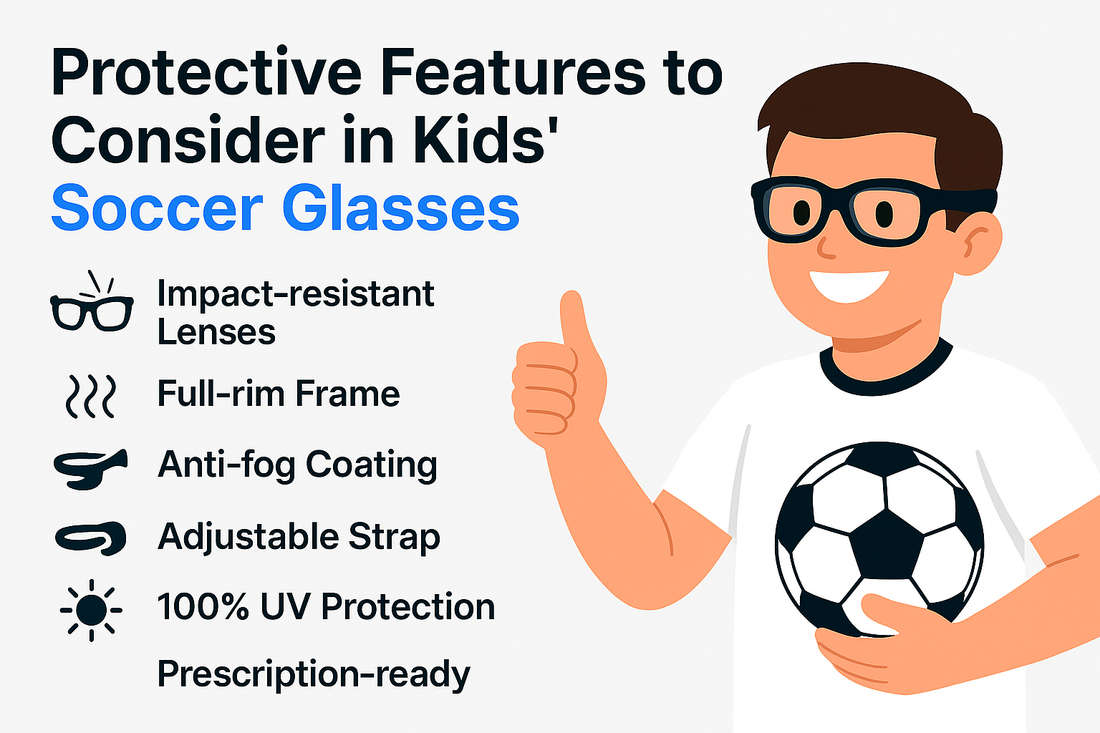
Protective Features to Consider in Kids' Soccer Glasses
When your child charges down the field, you want them focused on the ball—not on slipping frames or foggy lenses. The right kids’ soccer glasses blend comfort, clarity, and safety so they can see the play and stay protected from fast kicks, elbows, and turf debris. Think of them as a lightweight shield that lets confidence soar on every sprint and slide tackle.
Why soccer-specific protective glasses matter
Soccer demands constant movement and surprise impacts. Everyday eyeglasses aren’t built for stray balls or shoulder-to-shoulder contact. Sports eyewear uses tougher materials, fuller coverage, and secure geometry to stay put as kids pivot, jump, and defend. Crucially, it’s engineered to absorb and disperse impact, preserve a wide field of view, and handle sweat, heat, and dust better than standard frames.
Core impact protection: lenses and frames
Start with lenses. Polycarbonate or Trivex is the gold standard: highly impact resistant, lightweight, and with built-in UV protection. Choose full-rim designs that surround the lens and a mild wrap to guard the sides. If available, a slightly thicker lens center boosts protection without adding noticeable weight.
Frames should be durable and flexible so they spring back rather than crack. A rounded, low-profile bridge lowers injury risk in collisions, while soft padding at the nose and temples cushions the face. Smooth, beveled edges reduce snagging, and extended side coverage helps shield against fast lateral impacts—especially for defenders.
Keep vision clear in every condition
Clarity is safety. Anti-fog coatings limit clouding during high-intensity play and on cool mornings. Ventilation channels around the rims let warm air escape and fresh air circulate. A hydrophobic layer makes sweat and sprinkler droplets bead off, and a hard anti-scratch coat preserves visibility. Teach kids to rinse grit with water before wiping to avoid grinding particles into the lens.
Fit, comfort, and stay-put security
Protection only works if glasses stay in place. Look for kid-specific sizing so the frame sits snugly without pinching. Adjustable elastic straps that connect at the temples or wrap the head keep eyewear stable through sprints and headers. Grippy nose pads and temple tips combat slipping. The frame should sit close for debris blocking yet allow airflow so eyelashes don’t brush the lens.
Sun and light management
Outdoor matches demand full UV protection. Lenses should block 100% of UVA and UVB to safeguard developing eyes. Clear lenses suit cloudy days or evening games; light tints can boost contrast in bright grass. Photochromic lenses adapt to changing light, and mild polarization can reduce glare—just confirm your child can still track the ball’s spin and field texture.
Prescription-ready and maintenance tips
Many kids need prescription vision. Choose sports glasses that accept direct Rx lenses or an insert behind the protective shield. After any major impact, inspect for cracks and replace if damage appears. Build a simple routine: rinse after dusty games, pat dry with a microfiber cloth, and store in a hard case between practices.
Quick safety checklist
- Impact-resistant polycarbonate or Trivex lenses
- Full-rim, wraparound frame with side coverage
- Anti-fog, ventilation, and scratch-resistant coatings
- Adjustable strap, cushioned nose bridge, and grippy temples
- 100% UVA/UVB protection and appropriate tint for conditions
- Prescription-ready options for clear, corrected vision
FAQs
How should kids’ soccer glasses fit?
They should feel snug without pressure points, sit close for coverage, and stay put when your child shakes or jumps. An adjustable strap helps dial in stability.
What lens material is safest for youth soccer?
Polycarbonate and Trivex are top choices because they’re lightweight, highly impact resistant, and offer clear optics for fast play.
Do anti-fog coatings really work during games?
Yes—especially when paired with ventilation and proper cleaning. Keep the interior dry, avoid touching the inner surface, and let air flow to reduce fog dramatically.



